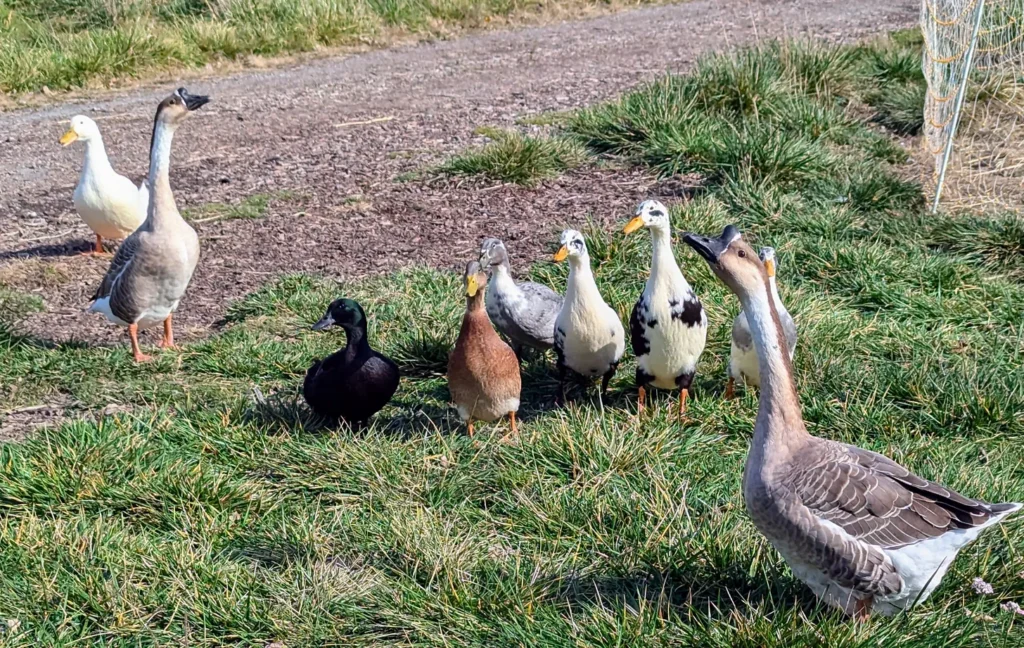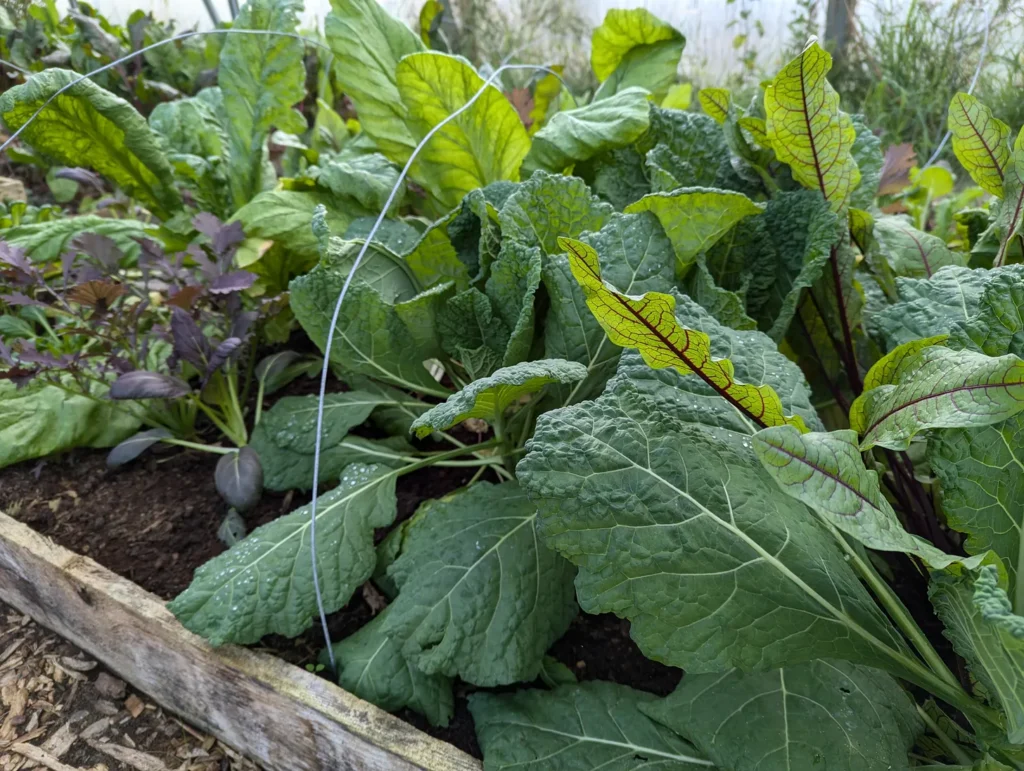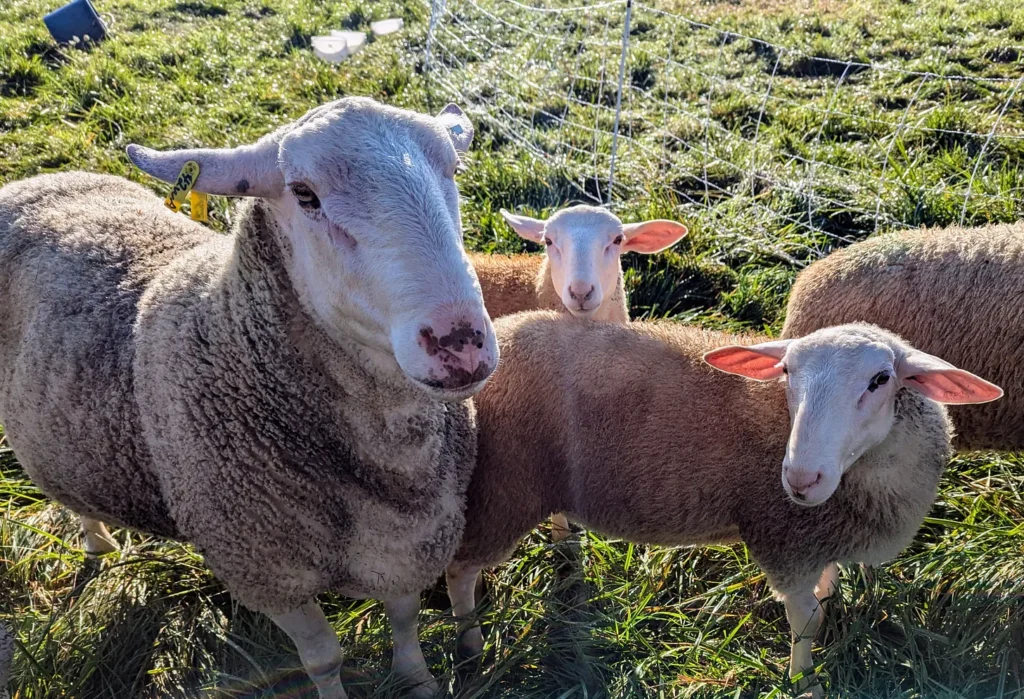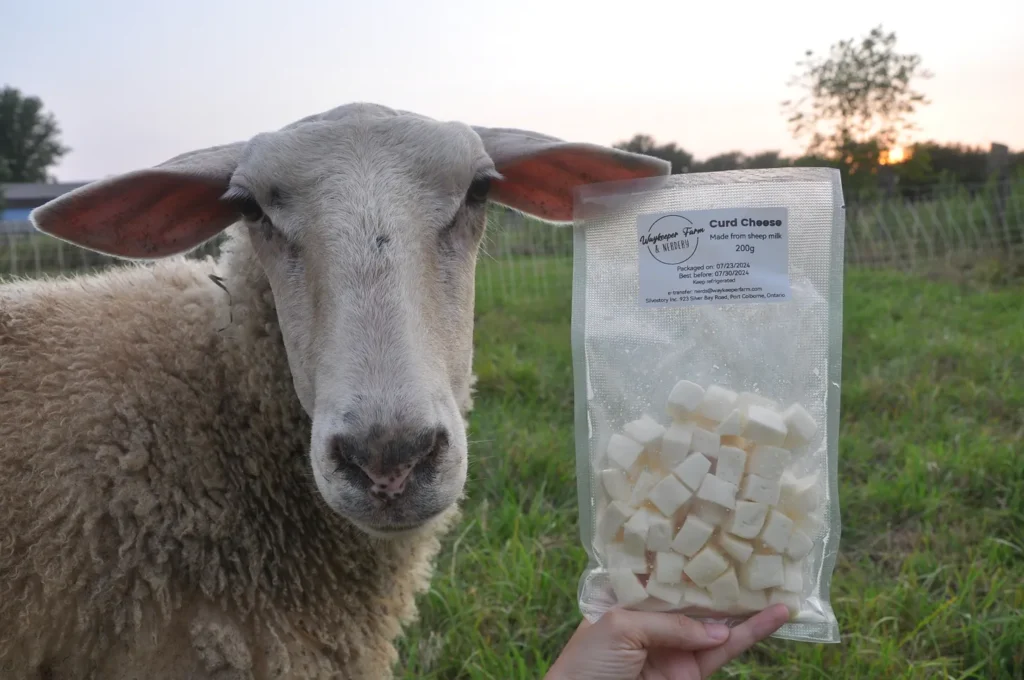Recently, a reader asked me to share more about getting our regenerative farm going.
I hesitate to share too much about our farming journey because I’m still in the middle. I don’t have it all figured out, I’m still making mistakes, and I don’t want to lead people in the wrong direction if what we’re trying ends up failing.
But we can often learn a lot by watching people on their journey, imperfect as it is.
So today I’ll be sharing some lessons learned from the farm and what we’re currently grappling with.

The things we figured out
Since moving to the farm, we jumped feet-first into things we had never done before.
Keeping chickens, ducks, and geese. Growing fruits and vegetables in a commercial-sized greenhouse. And raising dairy sheep.
The poultry has been the easiest so far. We have managed to keep most of them alive and well, except when an opportunistic hawk nabbed a few chickens while they were free-ranging.
Growing vegetables in the greenhouse has been a challenging learning curve. One that I’ve enjoyed.
At first, it was a matter of figuring out the timing. When to plant so we could have veggies year-round. I’m still working on getting the balance between removing heat-loving summer plants like tomatoes, peppers, and cucumbers in time to plant cool-loving brassicas like cabbage, broccoli, carrots, and daikons.
The big challenge we struggled with until a few months ago was cabbageworm damage. We might get one out of every five brassica plants to survive the bug damage.
The best solution was to cover these crops with row cover and hope no bugs got under the cover. This was a decent approach, but if the timing was off and we had caterpillar eggs in there before we put the cover on, our veggies were toast.
These caterpillars work fast too. They could defoliate a plant in just a day or two, and even if I squished every bug I saw, it was a losing battle.
Luckily, I’m always seeking out gardening knowledge. I came across the concept of Korean natural farming and the book Jadam Organic Farming (affiliate link). In this book, there was a list of natural homemade pesticides created using common plants and water.

One suggestion for caterpillars on brassicas was Ginko. We have a Ginko tree growing near our local library, so one fall day we asked the library if we could harvest the fallen Ginko nuts. They gave us the go-ahead. We were doing them a favor because these fruits are pretty stinky, and we picked a small bag full. Then we boiled the Ginko fruits, strained the solids out, and kept the liquid.
We diluted our Ginko brew with water and added a bit of liquid soap. (We also made liquid soap by following a recipe in the Jadam book, because we like experimenting with stuff like that.)
I put my mix in a spray bottle and sprayed some of my Brassica beds, fingers crossed. I was amazed that there was no bug damage for the next few days. I still had row cover over the veggies, so I assumed that was doing most of the protecting.
But a few days later, one of the areas with a cover had new caterpillar bite marks. It was the one area I had not sprayed! So I started applying the spray every 3 or 4 days, and then removed the row covers entirely and we have had the most bug-free season of brassicas ever.
I was skeptical about the marketing claims the authors of the Jadam book made. But since making this effective, practically free, and non-chemical pesticide I’m convinced they aren’t overpromising.

Things we’re still figuring out
By far the biggest farming challenge has been our dairy sheep. Not that they aren’t rewarding, but they have given us the hardest lessons.
The aspects that might seem the most difficult, like lambing time, haven’t been bad. But figuring out how to manage internal parasites or “worms” as they are often called has been tricky.
In the 4 years we’ve had sheep, we lost several sheep to parasites. Our first year we got lucky and assumed caring for sheep was easy. The second year is when the troubles started.
We started with rotational grazing from day one, which is both regenerative to the soil and offers more forage for the sheep to eat. But, it can also increase internal parasites because sheep will re-graze the same pastures again in the same year. One solution would be to get more land so they don’t re-graze as soon, but we weren’t ready to give up yet.
We tried commercial dewormers but a lot of parasites are resistant to them. We learned how to take poop samples and analyze them to see how many parasite eggs were present in each sheep. This was useful, but it didn’t offer us a solution.
We ended up figuring out a mix of minerals that help against worms. The mineral that seems to do most of the heavy lifting is Copper Sulfate. Since incorporating it into our sheep management, we have had much better luck with parasites. It’s still not 100% and we have other levers to pull, like bringing sheep to the barn and keeping them off the grass when their parasite loads are too high.
Learning this lesson has been one of the most difficult parts of shepherding. Losing the sheep that you’ve named and that you take care of every day is heartbreaking.
Despite these setbacks, we still managed to jump into the milking aspects. In our first year, we milked two mama sheep, called ewes, by hand. It would take us 30 minutes by the end of the summer, and much longer for the first few weeks. Our forearm muscles grew. But the second year we invested in a milk machine, and it’s been amazing since we now milk five sheep.
What do we do with all the milk? That’s been another learning curve. We’ve figured out how to make cheese, yogurt, butter, and gelato. We made plenty of botched batches along the way.
We’re considering whether we should get a small dairy cow, like a Dexter. Because sheep don’t produce milk year-round, this would give us a milk supply in the sheep’s off-season.
But we’re asking ourselves if we’re of sound mind to bring another dairy animal to the farm. The benefit of dairy sheep is that we get a break from milking in the winter. We’re still in the middle of making this decision.
Another ongoing challenge with farming is what happens every time our kids bring home a cold from school. We must keep showing up for our daily farm chores, even if we’re not feeling well. It’s tricky, but doing the daily farm chores helps keep us active and healthier overall.

Turning our farm into a small business
For the first few years, our farm was a hobby. It kept us grounded and was a beautiful way to spend time away from our computers.
Now that I’ve sold AccessAlly, I have more time to devote to the farm, and we’re looking at ways to make it into a small business.
I have no plans to make it into a huge venture. We’re just selling some surplus like cheese, eggs, and vegetables. We’ve also sold some lambs because otherwise, we would have too many sheep in just a few years.
There’s the possibility of turning the wool from our sheep into yarn. Making gelato to sell in the summer. Offering farm tours and teaching cheesemaking.
At this point, the possibilities are endless but we want to be intentional about our choices. I want to share the bounty of our farm, but I also don’t want to create a stressful business. To me, sharing knowledge and good food is more motivating than making a profit.
Building a community is a big motivation for me. I love showing people the animals and having them taste duck eggs or fresh figs from our greenhouse.
Selling software is much easier because you aren’t limited geographically. Selling food with a shelf life means you need local people who want what you have to offer immediately. It’s a whole new learning curve.


